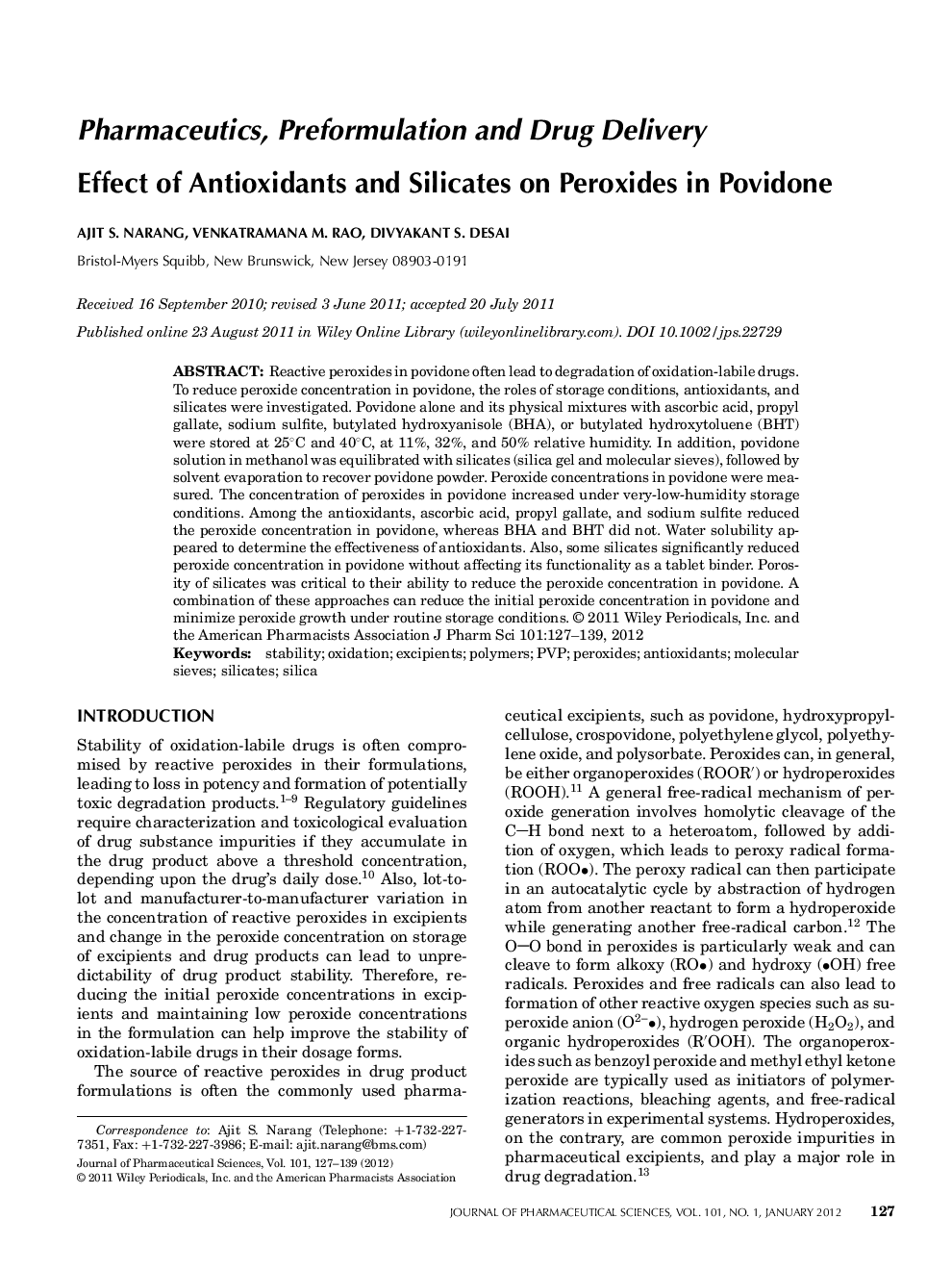| Article ID | Journal | Published Year | Pages | File Type |
|---|---|---|---|---|
| 2485400 | Journal of Pharmaceutical Sciences | 2012 | 13 Pages |
Abstract
Reactive peroxides in povidone often lead to degradation of oxidation-labile drugs. To reduce peroxide concentration in povidone, the roles of storage conditions, antioxidants, and silicates were investigated. Povidone alone and its physical mixtures with ascorbic acid, propyl gallate, sodium sulfite, butylated hydroxyanisole (BHA), or butylated hydroxytoluene (BHT) were stored at 25°C and 40°C, at 11%, 32%, and 50% relative humidity. In addition, povidone solution in methanol was equilibrated with silicates (silica gel and molecular sieves), followed by solvent evaporation to recover povidone powder. Peroxide concentrations in povidone were measured. The concentration of peroxides in povidone increased under very-low-humidity storage conditions. Among the antioxidants, ascorbic acid, propyl gallate, and sodium sulfite reduced the peroxide concentration in povidone, whereas BHA and BHT did not. Water solubility appeared to determine the effectiveness of antioxidants. Also, some silicates significantly reduced peroxide concentration in povidone without affecting its functionality as a tablet binder. Porosity of silicates was critical to their ability to reduce the peroxide concentration in povidone. A combination of these approaches can reduce the initial peroxide concentration in povidone and minimize peroxide growth under routine storage conditions. © 2011 Wiley Periodicals, Inc. and the American Pharmacists Association.
Keywords
Related Topics
Health Sciences
Pharmacology, Toxicology and Pharmaceutical Science
Drug Discovery
Authors
Ajit S. Narang, Venkatramana M. Rao, Divyakant S. Desai,
